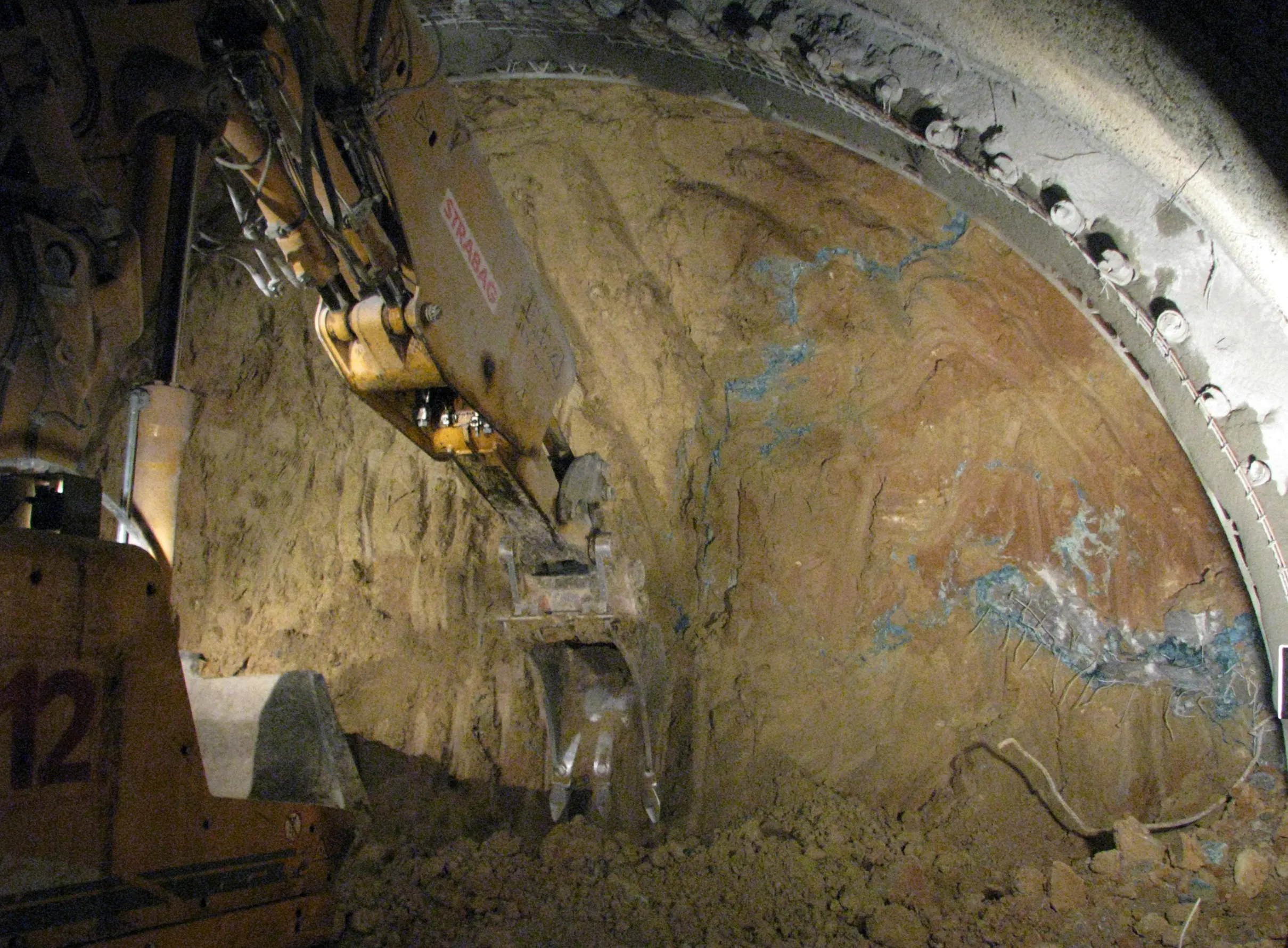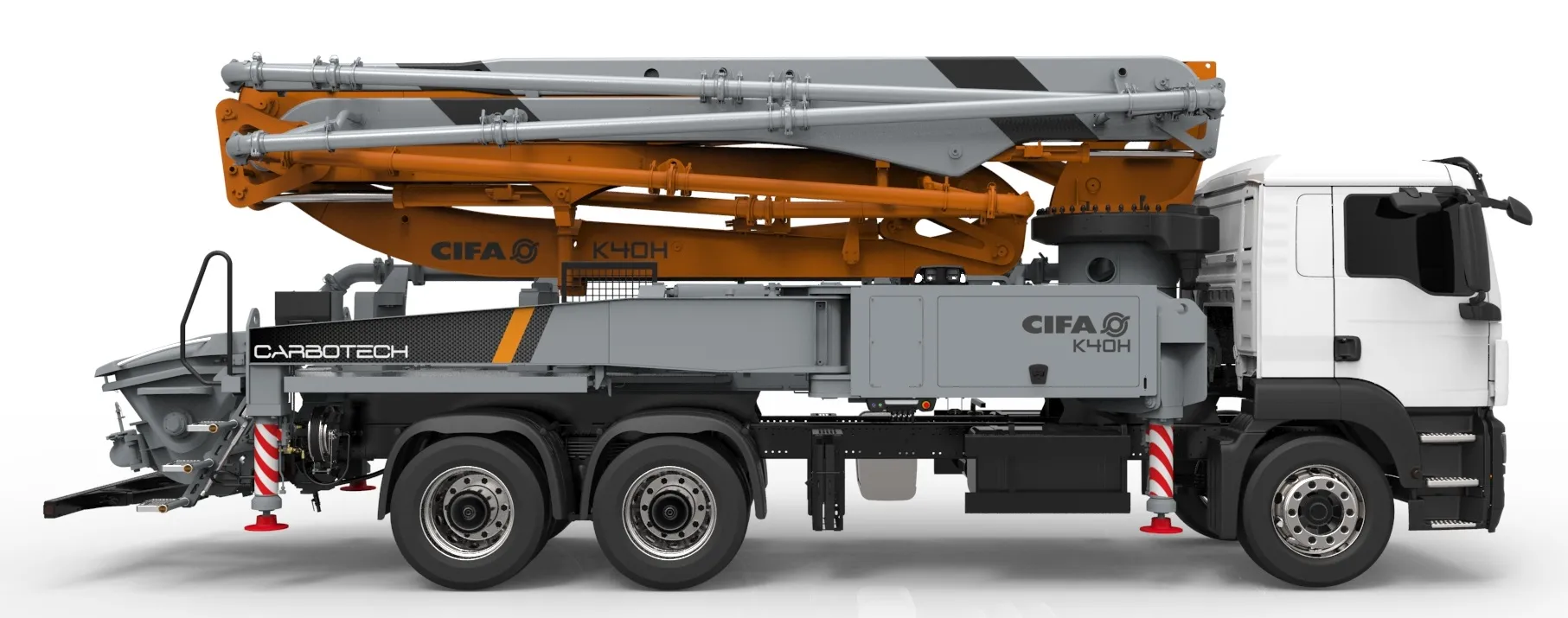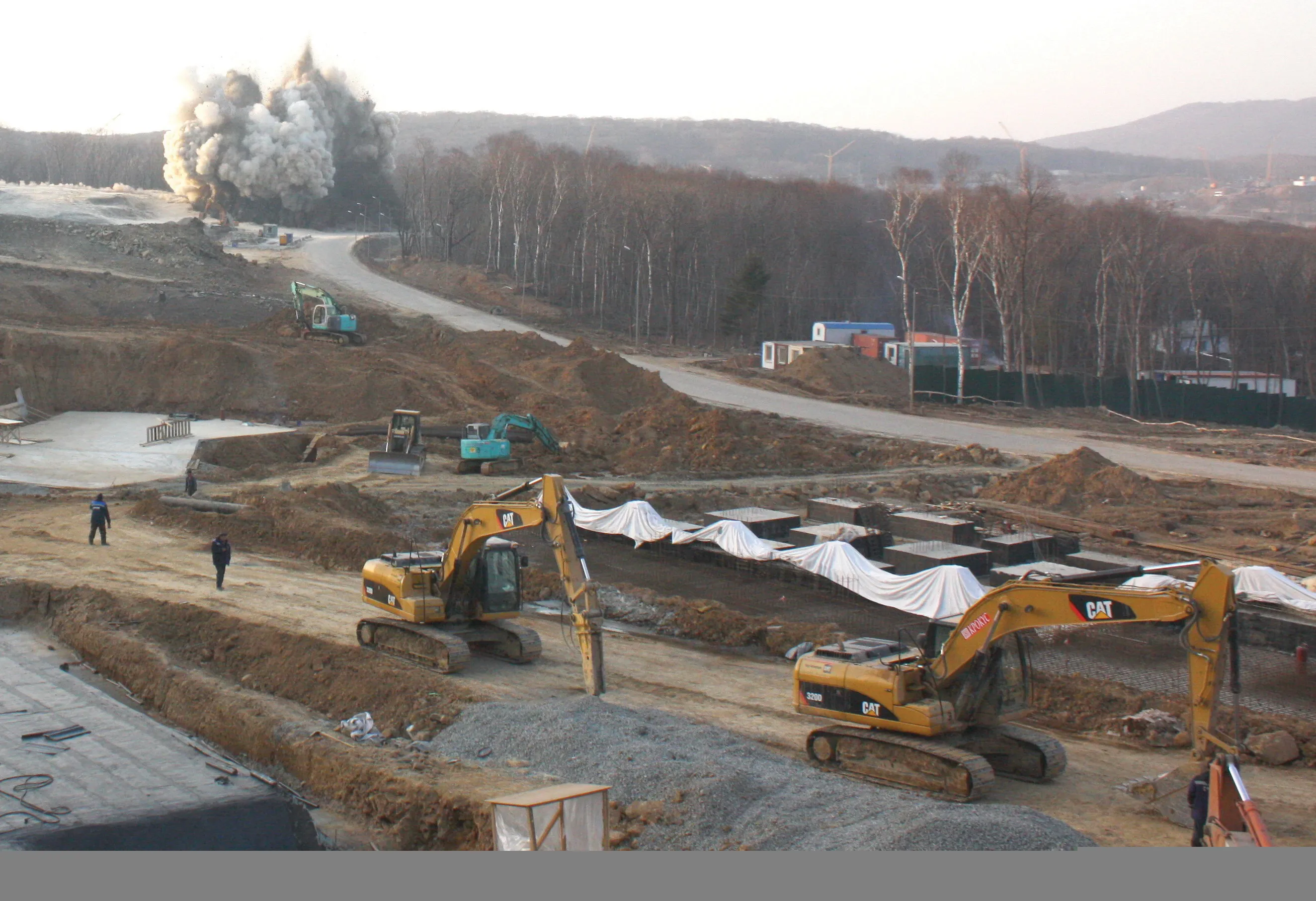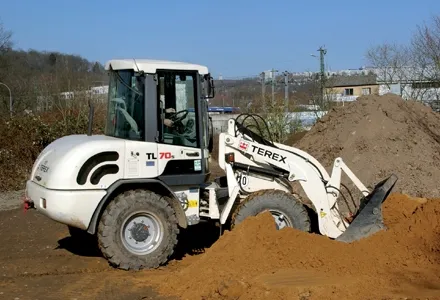Some of the bottlenecks on the multi-lane Mittlere Ring, Munich, Germany, one of the main arterial roads circling the city centre have been eliminated by the addition of new tunnels. The Luise-Kiesselbach Square, the last section of this road improvement effort, is an important traffic hub south-west of the city where motorways A96 from Lindau and A5 from Garmisch meet, causing long delays in daily rush-hour traffic, writes Patrick Smith.
February 10, 2012
Read time: 6 mins

Some of the bottlenecks on the multi-lane Mittlere Ring, Munich, Germany, one of the main arterial roads circling the city centre have been eliminated by the addition of new tunnels. The Luise-Kiesselbach Square, the last section of this road improvement effort, is an important traffic hub south-west of the city where motorways A96 from Lindau and A5 from Garmisch meet, causing long delays in daily rush-hour traffic, writes Patrick Smith.
The €398.5 million (US$536 million) construction project consists of a 1,500m long, partly two-level tunnel leading to the A95 motorway and a 400m long underpass as well as a 620m long tunnel in the eastern section.
Convenient approach roads mean the extension of the Mittlere Ring will considerably relieve traffic congestion in the area and improve living conditions for residents by redirecting traffic underground and creating a new park. Construction work began in October 2007 and is scheduled for completion in 2015.
To minimise disturbances for residents, the new section is primarily being constructed using the cut-and-cover method.
Initially, piped vertical boreholes with diameters of 88-150cm are drilled to depths of 10-12m, and then filled with concrete, forming the future side walls of the tunnel. After this, the tunnel ceiling is concreted in sections approximately 13.5m long directly onto the soil, which serves as lower formwork. The soil is then excavated from within, starting from the future tunnel exits.
The FLIMU reinforcing steel coupling system, supplied by2563 DSI (Dywidag Systems International), was chosen as "the most cost-effective solution" for stabilising the transition between the drilled piles and the tunnel ceiling. It is said to offset slightly higher material costs by significantly reducing the cost of installation labour. In addition, the contractor had already successfully used the FLIMU system supplied by DSI during reconstruction at Richard-Strauß Road at the north-eastern section of the Mittlere Ring.
"Even in areas with minimal working space, the FLIMU system provides a simple, trouble-free connection, and only three employees are necessary for installation: one employee to operate the lifting vehicle, and two employees to work the extruder," says DSI.
The company, through its DSI unit, BU Geotechnics, Koenigsbrunn, Germany, supplied some 35,000, 28mm Ø extruded coupler splices; 20,000, 32mm Ø extruded coupler splices, and the necessary extruding equipment.
Before installation, DSI also carried out tests in original sizes and gave instructions after which work could be carried out independently by the construction site workers.
The project owner is Landeshauptstadt München, Munich; the general contractor is the Ingenieurbau LKP joint venture, also of Munich and the contractor is W&F (Wayss & Freytag Ingenieurbau), Munich, and Berger Bau of Berlin. The Munich-based architects are Baureferat München, HA Tiefbau and HA Ingenieurbau.
In another project, part of the new four-lane M6 Duna Autópálya motorway connection in Hungary, running south from Budapest towards the direction of the Croatian border, DSI also supplied materials. It is part of Trans-European Corridor V.
French road construction company184 Colas and the Austrian construction company 945 Strabag formed a consortium to build the new motorway that includes a total of 83 bridge structures and four tunnels (constructed by Strabag and designed as double tunnels with cross sections of approximately 100m²).
Some 534m of tunnels were constructed by the cut-and-cover method and 5,530m was constructed using the New Austrian Tunnelling Method (NATM).
DSI Austria supplied all ground control products used for tunnel driving, mainly PANTEX lattice girders, IBO-self-drilling anchors and IBO-spiles. Later, the stabilisation concept for tunnel driving was modified following a large-scale tunnel collapse. Strabag decided to use the AT-Pipe Umbrella Support System, and 36 pipe umbrellas, supplied by DSI Austria, with individual lengths of 15m each and an overlap of 5m were installed.
The extremely challenging ground conditions required an adaptation of the AT-Pipe Umbrella Support System to the conditions on site, which could be carried out at short notice by the project team from DSI Austria.
"This procedure ensured the quick and timely completion of this difficult contract section, which guarantees the opening of the M6 motorway in 2010," says DSI.Meanwhile,2294 CAT 314D LCR and 328D LCR excavators, customised by the dealer for tunnelling purposes, are said to be "a rare species among the large Cat excavator family," and are working on a tunnel in Switzerland.
The 15.4km long Ceneri Base Tunnel in the canton of Ticino, from the north portal near Camorino and the south portal at Vezia, is being built under contract from the2561 Swiss Federal Government by Alptransit Gotthard.
Tunnelling on the main 2.3km long access adit to the cavern started in 2008 using a 9.7m diameter Robbins tunnel boring machine (TBM), and excavation, support and lining works should be finished in 2016 with commercial operation of the tunnel planned for 2019.
Tunnel contractor consortium Condotte Cossi opted for the Swiss Cat dealer2562 Avesco, which "was able to offer most of the needed machinery to complete the excavation of the twin tunnels." For the Ceneri Base Tunnel project Avesco, Italian Cat dealer CGT and 1255 Zeppelin, the German Cat dealer, are working together, and as the Bautechnik branch of Avesco is the official dealer for 325 Sandvik, it was able to offer a complete package including eight drilling jumbos, four underground wheel loaders, eight compact radius tunnelling excavators, eight hydraulic hammers, eight special wheel loaders and some support equipment.
While the track frames and the upper-structures look familiar, both booms and dippers on the customised Cat 314D LCR and 328D LCR excavators are unconventional in shape and size. A further feature on both excavators is heavy-duty dozer blades.
Avesco invested a lot of hours to change a standard Cat compact radius 314D LCR into a 15.5tonne tunnelling excavator, with mechanics removing the original 4.65m long booms and welders building new 2.01m long ultra-short booms.
"Besides the vicious-looking ripping claw, a 1,330kg Sandvik BR2266 hydraulic hammer and a standard backhoe bucket for loading purposes can be attached to the quick coupler," says178 Caterpillar.
With an operating weight of 43.5tonnes the Cat 328D LCR's tail swing radius is 1.9m, only marginally protruding over the undercarriage. Its specially-designed main boom, which pivots 45° to the left or right of centre, is built by Zeppelin, and this tilting mechanism allows the excavator to reach maximum operational flexibility in narrow tunnel profiles.
Avesco delivered four 2,370 kg Sandvik BR3088 hydraulic breakers for the Cat 328D LCR tunnelling excavators, and it also modified four Cat 938H wheel loaders for loading and shovelling duties in the narrow connecting galleries between the two single-track tunnels. Side-dumping buckets were built up to specifications by Swiss-based attachment specialist Ullmann.
When drill and blast operations are at full swing, the crew of the intermediate heading at Sigirino will drive the two tunnels simultaneous to the north and south, and after each blast a 328D LCR moves in and clears the crown and face from any loose rock and finishes off the tunnel profile with the hydraulic hammer.
The €398.5 million (US$536 million) construction project consists of a 1,500m long, partly two-level tunnel leading to the A95 motorway and a 400m long underpass as well as a 620m long tunnel in the eastern section.
Convenient approach roads mean the extension of the Mittlere Ring will considerably relieve traffic congestion in the area and improve living conditions for residents by redirecting traffic underground and creating a new park. Construction work began in October 2007 and is scheduled for completion in 2015.
To minimise disturbances for residents, the new section is primarily being constructed using the cut-and-cover method.
Initially, piped vertical boreholes with diameters of 88-150cm are drilled to depths of 10-12m, and then filled with concrete, forming the future side walls of the tunnel. After this, the tunnel ceiling is concreted in sections approximately 13.5m long directly onto the soil, which serves as lower formwork. The soil is then excavated from within, starting from the future tunnel exits.
The FLIMU reinforcing steel coupling system, supplied by
"Even in areas with minimal working space, the FLIMU system provides a simple, trouble-free connection, and only three employees are necessary for installation: one employee to operate the lifting vehicle, and two employees to work the extruder," says DSI.
The company, through its DSI unit, BU Geotechnics, Koenigsbrunn, Germany, supplied some 35,000, 28mm Ø extruded coupler splices; 20,000, 32mm Ø extruded coupler splices, and the necessary extruding equipment.
Before installation, DSI also carried out tests in original sizes and gave instructions after which work could be carried out independently by the construction site workers.
The project owner is Landeshauptstadt München, Munich; the general contractor is the Ingenieurbau LKP joint venture, also of Munich and the contractor is W&F (Wayss & Freytag Ingenieurbau), Munich, and Berger Bau of Berlin. The Munich-based architects are Baureferat München, HA Tiefbau and HA Ingenieurbau.
In another project, part of the new four-lane M6 Duna Autópálya motorway connection in Hungary, running south from Budapest towards the direction of the Croatian border, DSI also supplied materials. It is part of Trans-European Corridor V.
French road construction company
Some 534m of tunnels were constructed by the cut-and-cover method and 5,530m was constructed using the New Austrian Tunnelling Method (NATM).
DSI Austria supplied all ground control products used for tunnel driving, mainly PANTEX lattice girders, IBO-self-drilling anchors and IBO-spiles. Later, the stabilisation concept for tunnel driving was modified following a large-scale tunnel collapse. Strabag decided to use the AT-Pipe Umbrella Support System, and 36 pipe umbrellas, supplied by DSI Austria, with individual lengths of 15m each and an overlap of 5m were installed.
The extremely challenging ground conditions required an adaptation of the AT-Pipe Umbrella Support System to the conditions on site, which could be carried out at short notice by the project team from DSI Austria.
"This procedure ensured the quick and timely completion of this difficult contract section, which guarantees the opening of the M6 motorway in 2010," says DSI.Meanwhile,
The 15.4km long Ceneri Base Tunnel in the canton of Ticino, from the north portal near Camorino and the south portal at Vezia, is being built under contract from the
Tunnelling on the main 2.3km long access adit to the cavern started in 2008 using a 9.7m diameter Robbins tunnel boring machine (TBM), and excavation, support and lining works should be finished in 2016 with commercial operation of the tunnel planned for 2019.
Tunnel contractor consortium Condotte Cossi opted for the Swiss Cat dealer
While the track frames and the upper-structures look familiar, both booms and dippers on the customised Cat 314D LCR and 328D LCR excavators are unconventional in shape and size. A further feature on both excavators is heavy-duty dozer blades.
Avesco invested a lot of hours to change a standard Cat compact radius 314D LCR into a 15.5tonne tunnelling excavator, with mechanics removing the original 4.65m long booms and welders building new 2.01m long ultra-short booms.
"Besides the vicious-looking ripping claw, a 1,330kg Sandvik BR2266 hydraulic hammer and a standard backhoe bucket for loading purposes can be attached to the quick coupler," says
With an operating weight of 43.5tonnes the Cat 328D LCR's tail swing radius is 1.9m, only marginally protruding over the undercarriage. Its specially-designed main boom, which pivots 45° to the left or right of centre, is built by Zeppelin, and this tilting mechanism allows the excavator to reach maximum operational flexibility in narrow tunnel profiles.
Avesco delivered four 2,370 kg Sandvik BR3088 hydraulic breakers for the Cat 328D LCR tunnelling excavators, and it also modified four Cat 938H wheel loaders for loading and shovelling duties in the narrow connecting galleries between the two single-track tunnels. Side-dumping buckets were built up to specifications by Swiss-based attachment specialist Ullmann.
When drill and blast operations are at full swing, the crew of the intermediate heading at Sigirino will drive the two tunnels simultaneous to the north and south, and after each blast a 328D LCR moves in and clears the crown and face from any loose rock and finishes off the tunnel profile with the hydraulic hammer.









